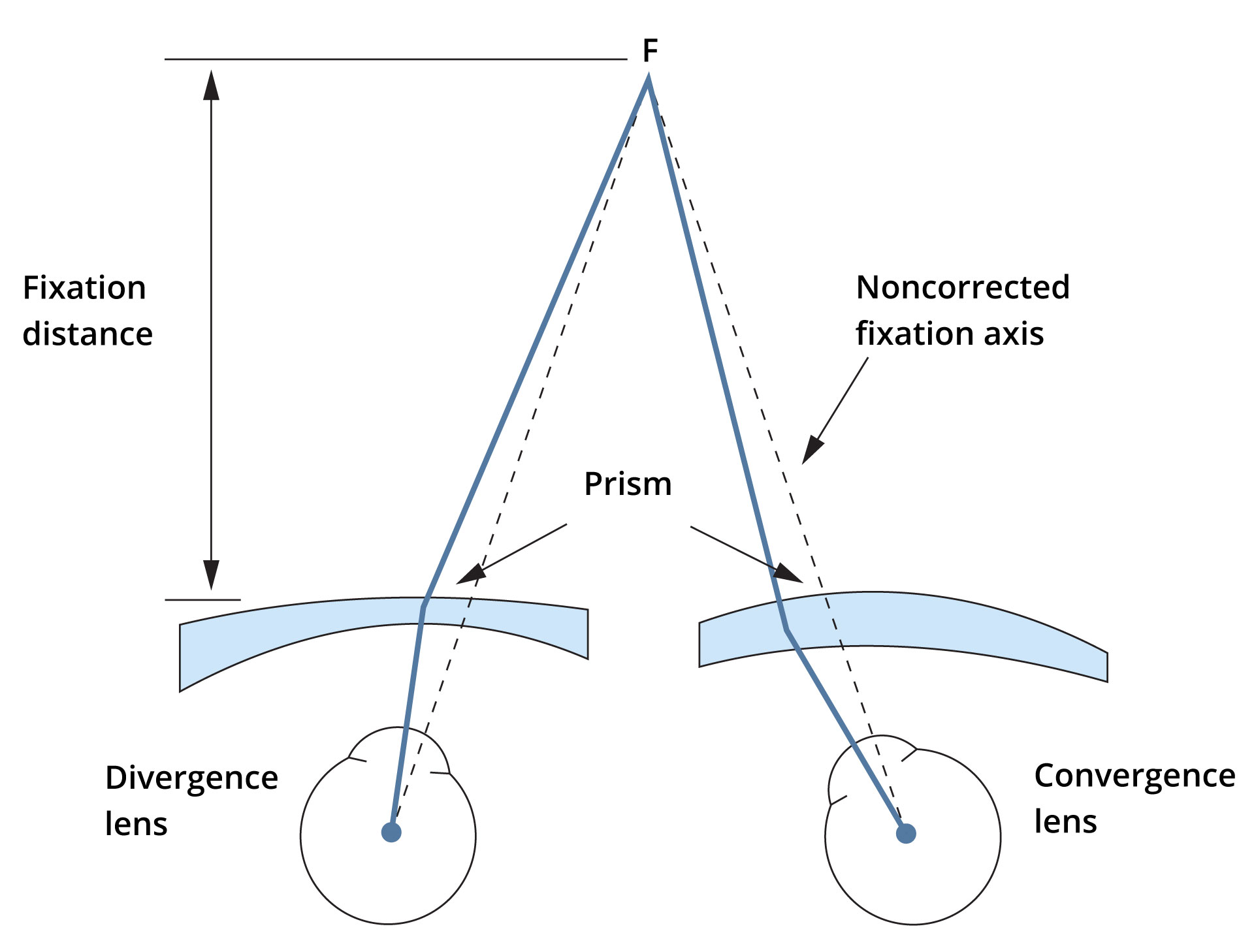Calculation of convergence task in spectacle correction
Introduction
Spectacles can influence convergence value of the patient due to spectacle lens prismatic effect. Convex spectacle lens contains base turned out from the lens and concave spectacle lens base turned in the lens. This added prismatic effect can support the patient’s convergence. For near vision glasses is recommended to center the lens whit its optical centre right on the pupil. This way we do not influence near convergence.

Goals
- Measure pupillary distance for far and near (40 cm)
- Measure vertex power of the lens for right and left eye
- Calculate theoretical value of convergence for near (40 cm) during the centration of spectacle lens according to near PD (40 cm)
- Calculate convergence value if the lenses are used for near (40 cm) but centered on far
Equipment
Digital or manual PD meter, writing equipment, calculator, spectacle lens
Methods
Measure pupillary distance for far and near (40 cm)
Choose one technique for measurement of near PD and measure distance PD and near PD on 40 cm. Note values for each eye separately.
Measure vertex power of the lens for right and left eye
With lensmeter measure right and left spectacle lens.
Calculate theoretical value of convergence for near (40 cm) during the centration of spectacle lens according to near PD (40 cm)
Use the far PD value and calculate theoretical value of convergence for each eye separately.
Calculate convergence value if the lenses are used for near (40 cm) but centered on far
Firstly, we calculate added prismatic effect if the patients look out of the lens’ optical center. In convex lens there is prismatic effect with base out and in concave lens we have base in prismatic. Total convergence will be higher in convex lens and lower in concave lens.


In case of concave lens we subtract P from K, in case of convex lens we add P to K.


In case of concave lens we subtract P from K, in case of convex lens we add P to K.
Results
Measure pupillary distance for far and near (40 cm)
PDDP = mm
PDDL = mm
PD40P = mm
PD40L = mm
𝚫PDP = mm
𝚫PDL = mm
Measure vertex power of the lens for right and left eye
S´BP = D
S´BL = D
Calculate theoretical value of convergence for near (40 cm) during the centration of spectacle lens according to near PD (40 cm)
K40P = pD
K40L = pD
Calculate convergence value if the lenses are used for near (40 cm) but centered on far
In case of concave lens we subtract P from K, in case of convex lens we add P to K.
In case of concave lens we subtract P from K, in case of convex lens we add P to K.
Discussion
Centration of the spectacle lens on far PD is recommended for aspheric lenses for near. The reason is to respect real eye’s rotation centre and maintain point imaging. On the other side we induce prismatic effect which influences patient’s convergence. Mostly we generate prismatic effect with base out which leads to increase of convergence which is uncomfortable.
Conclusion, notes, comments
Which is the critical direction if we center the lenses for near?
What is the effect of the increased convergence in patient?